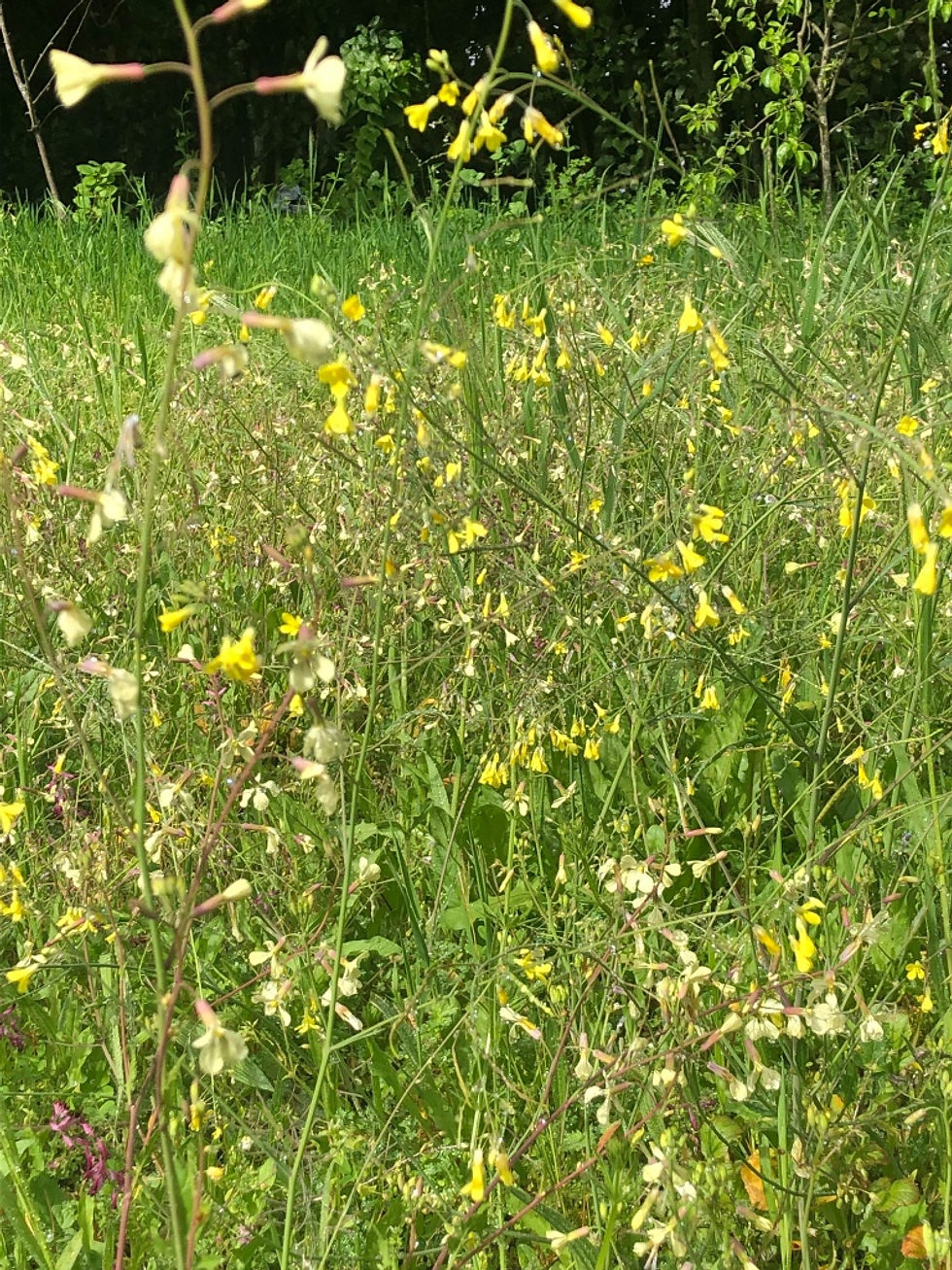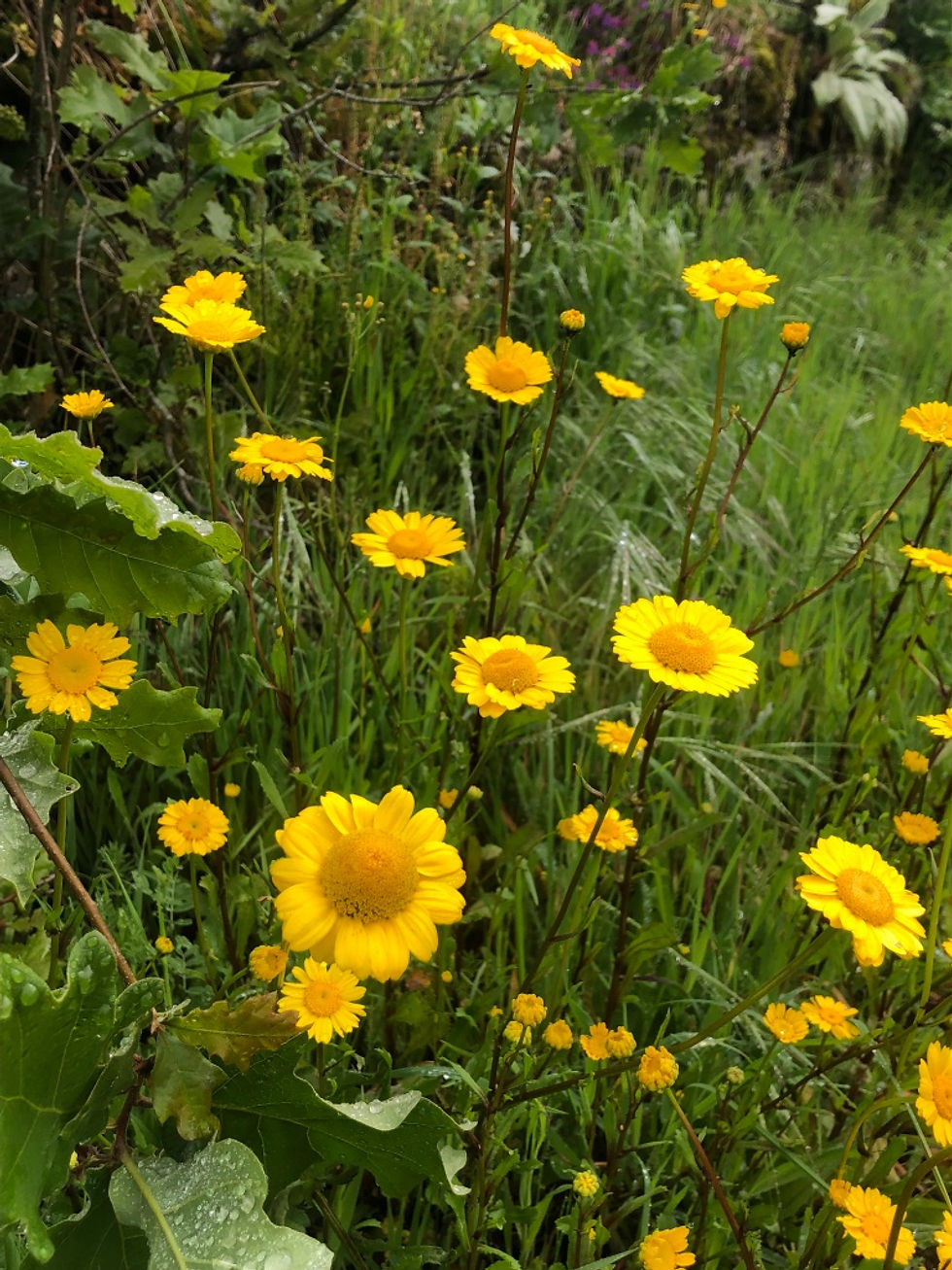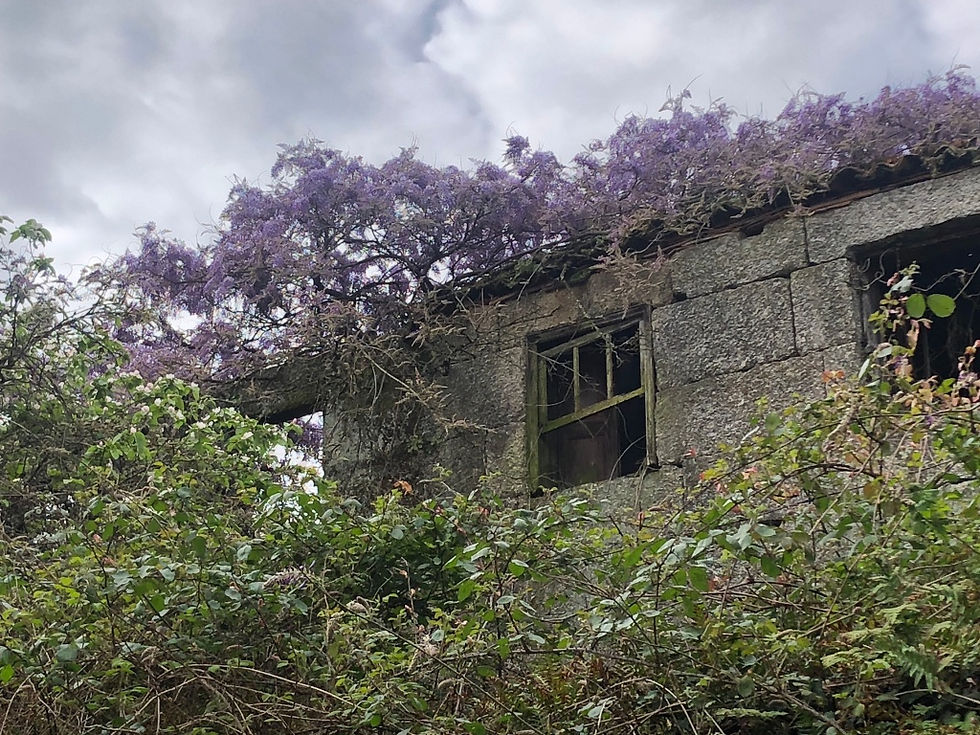“A Persian princess, a little Indian, a fox, a morning glory, a lovely wisteria–it alway
- Michelle Lester
- Apr 15, 2023
- 3 min read
Updated: May 19, 2023
Simone de Beauvoir



We knew we’d enjoy watching the seasons change here, but the speed with which the natural environment explodes with new life, recolours our surroundings and then proceeds to new forms is quite remarkable. After one week away in Spain, we’ve returned to meadows abundant with purple viper’s bugloss, replacing the more delicate blue violets, and the pretty white meadow saxifrage has been hustled behind tall grass and the wonderfully-named crested wartycabbage flowers. Golden Mediterranean marigolds light up Monty’s route to the dark, tunnelling paths that edge down past a vineyard to the woody glade where the Spanish bluebells have cast off their bells, and the ground waits for whatever’s next.



But it’s the wisteria that stops you in your tracks. Maybe it’s just me, but wisteria has always conjured up images of chocolate box cottages inhabited by unsmiling Tory ladies armed with expensive secateurs to ensure this fabulous plant sticks to the perfect curve its archway around their doorway requires. Yet on our mountain I’ve discovered its quite different character: here, wisteria is left free to be wild and wilful, clambering across roofless old cottages to form mauve, lacy canopies; lumbering across fields making unruly hedges, and shimmying up telegraph poles, transforming them into raggedy purple trees. As we drive home after popping to the shops, we see that wisteria spills over garden walls, freewheels across allotments and vineyards, and the scent fills our car, windows open to receive it.
Curious about the dominance of this plant here, I thought I’d find out a bit more about it. Incredibly, it seems that it’s been around for millions of years, with fossilised forms found in China dating over 7 million years old. It’s Japan, though (its other main site of origin) that has long celebrated wisteria in its art, theatre and literature, and right now – after cherry-blossom season – it’s ‘wisteria season’ in Japan. Symbolising good luck, kindness and longevity, it also has romantic connotations, and is traditionally given to newly-weds to represent a long and happy marriage. Another fun fact I retrieved is that while Japanese wisteria’s stems coil around supports clockwise, Chinese wisteria prefers to go anti-clockwise! A further genus of wisteria was identified in Carolina – smaller, less fragrant, but this is the type that was first introduced to Europe in the early 18th century, and named by Linnaeus in his Species Planetorum (1754). It was only in 1816 that the first Chinese wisteria was transported to England, curiously (for me) to someone who lived just a couple of miles away from my childhood home in Surrey. British gardeners quickly learned just how hardy and fast-growing this beautiful creeper is as it thrust its way through interior floors and walls but, undaunted, by the end of the 19th century it would be described as “among our most common and valued climbers.” (William Robinson, The Garden, 1872) And what of a Portuguese connection? Well, it turns out that a Portuguese botanist and and geologist, José Francisco Corrêa de Serra, may have proposed the name ‘wistaria’ in his obituary of the American physician and anatomist, Caspar Wistar, who he’d have known while living and teaching in Philadelphia in the 1810s. This honour, however, is variously attributed, but I liked finding out about Corrêa de Serra who sailed from Bristol originally to Philadelphia in 1797. Only connect, see? I love it!
And just in case you’re wondering what on earth I’m doing writing about wisteria, well, maybe this is partly what happens when you uproot yourself from long-established ways of being and seeing. My morning walks with Monty along the tracks around here offer some of my most precious moments, allowing me to see differently and to think differently. They shake up habitual thought-patterns, and allow me to wonder as I wander. At first, I explored new paths with him, which have now become our familiar routes, but still these offer up new colours, shapes, textures in the plants, leaves, mosses, earth, stones we pass each day. And there is something wondrous in this which poets and artists have captured for millennia. And I think that’s pretty cool.
References:



Comments